Top 8 KPIs in Accounting You Need to Track
.png?width=88&height=88&name=portrait_agathe_face%20(1).png)
Agathe Huez
Publié le 19.04.22
Mis à jour le 13.01.26
3 min
Résumer cet article avec :
What is KPI in Accounting?
In an industry where accuracy and efficiency are paramount, accounting teams can leverage data insights by tracking specific Key Performance Indicators (KPIs).
These metrics help accountants measure:
- Client satisfaction
- Cash flow
- Departmental performance
- Reporting accuracy.
Monitoring KPIs allows for improved performance through informed decision-making, essential for any successful accounting operation.
What Are the 8 KPIs Every Accounting Team Should Track?
Although there are numerous KPIs that accounting teams can track, we've identified 10 KPIs that are widely used and critically important in the industry. These KPIs are categorized into three main areas: Accounts Payable, Accounts Receivable, and Internal Accounting.
Accounts Payable KPIs
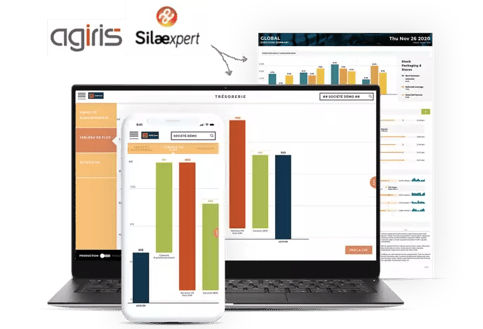
Tracking KPIs within your accounts payable department is essential for effectively measuring short-term liabilities. Accounting managers use this data to make informed decisions, ensure accurate bill payments, and maintain strong vendor relationships.
1. Days Payable Outstanding (DPO)
Days Payable Outstanding measures the average number of days a company takes to pay its bills. Accounting managers aim for a higher DPO, as it allows the company to hold onto its cash longer, which can be used for short-term investments and increasing free cash flow. However, if DPO is too high, it may indicate problems in paying bills.
Formula:
DPO = (Accounts Payable / Cost of Goods Sold) x # of Days

2. Cost Per Invoice
This KPI calculates the average cost of processing a single invoice, from receipt to payment. A high cost per invoice suggests inefficiencies in the accounts payable department, while a low cost indicates high efficiency.
Formula:
Cost per Invoice = Total AP Department Expenses / # of Invoices Processed
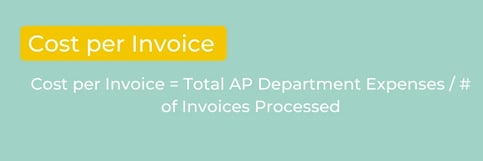
3. Invoice Cycle Time
Invoice Cycle Time tracks the average time it takes to complete the invoice payment cycle, from receipt to payment. High cycle times can lead to late payments penalities and strained vendor relationships.
Formula:
Invoice Cycle Time: Average time between completion of invoices
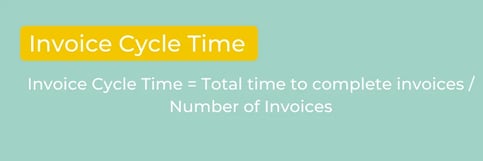
Example:
If an accounts payable department processes 100 invoices in a 40-hour week, the average processing rate is 1 invoice per 0.4 hours, or once every 24 minutes.
Accounts Receivable KPIs
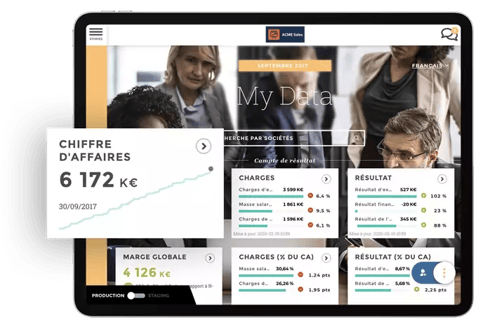
Accounts receivable departments are responsible for collecting sales revenue. Effectively managing and tracking these KPIs can improve:
- Invoice Due Date Management
- Minimization of Outstanding Receivables
- Cash Flow and Liquidity
Balancing these aspects with maintaining positive customer relationships is crucial.
4. Days Sales Outstanding (DSO)
Days Sales Outstanding measures the average number of days it takes for a company to collect receivables from a sale. A low DSO indicates good cash flow and quick conversion from receivables to cash.
Formula:
DSO = (Accounts Receivable / Total Credit Sales) x # of Days

5. Best Possible Days Sales Outstanding (BPDSO)
BPDSO is similar to DSO but excludes overdue invoices. It should be compared to the company’s payment terms.
If your BPDSO is higher than your standard payment terms, it means not all invoices are billed consistently. This discrepancy could be due to favorable terms being given to some select customers, or it could indicate a problem with some of your invoices.
Formula:
BPDSO = (Current Accounts Receivables / Total Credit Sales) x # of Days

6. Average Days Delinquent (ADD)
This KPI tracks how long the average payment has been overdue. High ADD values indicate a need for improvement in accounts receivable procedures.
Formula:
ADD = DSO – BPDSO

Internal Accounting KPIs
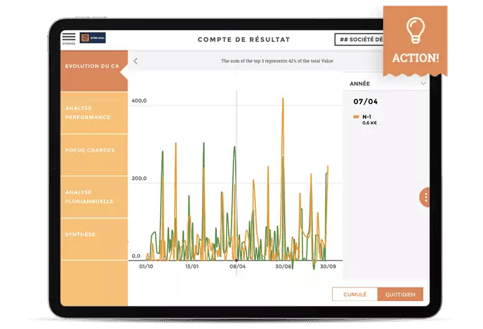
Internal accounting departments handle budgeting and financial reporting to clients and shareholders. Tracking these KPIs helps them draft accurate budgets and reduce unnecessary expenses.
7. Budget to Actual Variances
This KPI measures the deviation between actual and budgeted costs. High variance indicates discrepancies that need to be addressed.
Formula:
Budget to Actual Variances = Budgeted Costs – Actual Costs

8. First Contact Resolution Rate (FCRR)
First Contact Resolution Rate (FCRR) measures the proportion of requests resolved on the first contact. A high FCRR indicates that staff spends less time on issue resolution, reflecting the efficiency and quick problem-solving capabilities of the internal accounting department.
Formula:
FCRR = # of Requests Solved upon First Contact / Total # of Requests

How to Track Accounting KPIs
By tracking the aforementioned KPIs, accounting managers can significantly improve the efficiency and coordination across all departments within their business. Here’s how to effectively track these KPIs.
Set Clear Objectives
Define what you want to achieve with each KPI. Clear objectives help in understanding the purpose of tracking each KPI and the expected outcomes.
Use the Right Tools
Employ accounting software and analytics tools that can automate the tracking of these KPIs, providing real-time insights and reducing manual errors.
Regular Monitoring and Reporting
KPIs should be monitored regularly to ensure they are on track. Monthly or quarterly reports can help in identifying trends and making necessary adjustments.
Communicate Results
Share KPI results with relevant stakeholders. This transparency helps in aligning the team’s efforts towards common goals and fosters accountability.
Review and Adjust
Regularly review the effectiveness of the KPIs and make adjustments as necessary. Business needs and goals can change, and your KPIs should reflect those changes.
Importance of tracking KPI in Accounting
Tracking key performance indicators in accounting is crucial for maintaining financial health and operational efficiency. By focusing on the most important KPIs, accounting teams can ensure they are meeting their objectives and supporting the overall success of the business.
At Toucan, we understand the importance of data-driven decision-making. Our customer-facing analytics platform empowers companies to drive engagement with data storytelling. Ranked the #1 easiest-to-use analytics solution by Gartner Peer Insights, our no-code, cloud-based platform simplifies implementation and reduces custom development costs. Learn more about how we can help your business today and find out what users say about us in their reviews on Capterra.
.png?width=112&height=112&name=portrait_agathe_face%20(1).png)
Agathe Huez
Agathe is Head of Brand & Communication at Toucan, with over 10 years of experience in marketing, branding, and corporate communication, particularly in the SaaS and tech B2B sectors. An expert in brand strategy, storytelling, and public relations, Agathe helps businesses give meaning to their communication and showcase their expertise to clients and partners. She plays a key role in growing Toucan’s visibility and positioning as a leading embedded analytics solution, both in France and internationally. On Toucan’s blog, she shares insights on how to build impactful B2B brands, create memorable experiences, and turn data into a true competitive advantage.
Voir tous les articles

